Respecting Oze
Conserving and using Oze’s rich natural surroundings
Oze has a splendid natural environment that includes Ozegahara Marsh and other marshes, pristine forests, lakes and mountains as well as a rich culture and history interwoven with nature.
We ask people visiting Oze to experience these unique local characteristics while considering its fragile environment.
1. Respect Oze as if you were a guest in someone’s house.
Respecting the environment here is a shortcut to experiencing the area’s true nature.
Treating it as if you were in someone’s house enhances consideration of its natural environment and culture.
2. Allow plenty of time in Oze.
It takes time to appreciate Oze. We advise scheduling trips to allow as many hours as possible in the area.
3. Listen to locals.
They know what visitors can learn from Oze, how to enjoy it and what to look out for.
Try to actively communicate with local people, including guides, at visitor centers and mountain lodges.
4. Try to see the various faces of Oze.
Oze has five main access points as well as many paths diverging from them. Changing routes and seasons in which visits are planned allows visitors to experience the transition of the area’s rich natural elements.
At the Yamanohana, Kenkyu-mihon-en (Research Exhibition Garden) located at the western edge of Ozegahara Marsh, visitors can take a leisurely walk through skunk cabbage colonies even on weekends during the busy season.
In areas away from the main access points, such Ayamedaira Marsh and Hiuchi-ura Rindo mountain trail, hikers can enjoy a tranquil atmosphere throughout the season.
Manners in Oze
1. Do not step onto marshes.
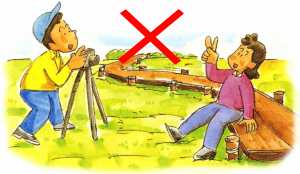
To protect the marshes, please do not step off boardwalks onto, place tripods on or sit on boardwalks or at rest stops with your feet on the marshes below.
2. Do not remove animals or plants.
To protect local ecosystems and preserve the natural landscape of Oze, animal capture and plant harvesting are prohibited by law. Please do not use fallen branches as walking sticks or collect fallen leaves.
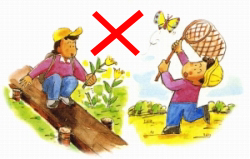

3. Take garbage home with you.
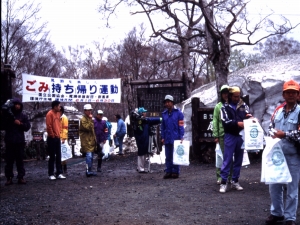
Discarding and abandoning garbage are prohibited in Oze. Please take garbage home; there are no disposal points in Oze.
Examples of littering:
- Leaving garbage at public bathrooms, boardwalks, camping sites, etc.
- Throwing away cigarette butts.
- Throwing coins into ponds.
- Disposing of leftover food items (e.g., fruit skins).
4. Do not bring pets.

Domesticated animals may pose a threat or transmit diseases to wild animals living in Oze, and may disturb other visitors.
5. Prevent intrusion by alien species.
To keep alien plant species from entering Oze, please clean shoes of any mud that may contain plant seeds using the mats provided at mountain access points.
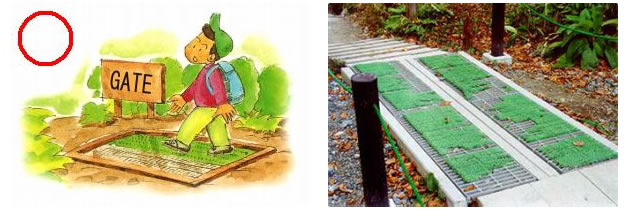
6. Do not stray from boardwalks or mountain trails.
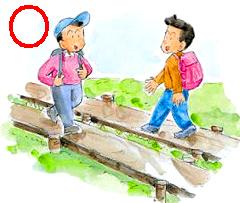
Please do not step off boardwalks onto marshes or stray from trails into vegetation. Keep to the right on boardwalks and trails; people ascending have the right of way. Smoking is prohibited on boardwalks and trails.
7. Use public bathrooms appropriately.
Please use the toilet paper provided and keep bathroom facilities clean for subsequent users. Maintenance of mountain bathrooms requires a lot of work. Donation boxes are installed at bathroom entrances to help cover some of the maintenance costs (Japanese currency only).
Examples of items that have clogged toilets in the past:
Ballpoint pens / Sanitary goods / Pedometers / Towels / Gloves / Clothes / Underwear / Cameras / Binoculars / Plastic bags / Lunch leftovers / Empty cans / Empty bottles
If such items are accidentally dropped in the toilet, contact the bathroom manager immediately.
8. Observe designated camping areas.
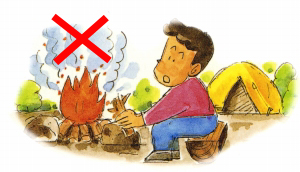
Do not camp outside designated camping sites.
9. Do not light campfires.
Portable cooking stoves may be used in safe places where no disturbance will be caused to others.
10. Do not throw coins.
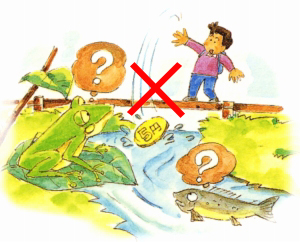
Throwing coins into ponds and rivers only harms Oze’s natural environment. Instead, please donate the money via the donation boxes provided.
11. Bring portable toilet facilities with you.
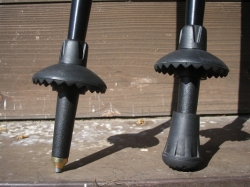
There are no bathrooms on Mt. Shibutsu and Mt. Hiuchigatake. Please bring portable toilet facilities (available at trail head shops and other places) when climbing these mountains.
12. Use pole caps.
Bare poles damage boardwalks and trails. Please use pole caps.
Conduct at mountain lodges
1. Enjoy your stay at a mountain lodge, but don’t forget the rules.
There are 22 lodges in Oze that can accommodate a limited number of guests by reservation.
Unlike other mountain areas, Oze is a basin and is therefore rich in water. Visitors can bathe, but may not use soap or shampoo.
The lodges provide good bedclothes and meals in the same way as other inns; indeed, guests might not even feel like they are staying in a remote mountain lodge at all.
Please remember that this is a national park. The rules to be observed at lodges in Oze are listed below.
2. Oze’s lodges accommodate a certain number of people by reservation.
In the mid-1960s when the country was enjoying a tourism boom, the lodges accepted three visitors per tatami mat. As the number of visitors increased, the effects of wastewater on the environment became problematic, and a new rule was introduced in 1965 setting the maximum number of people staying at the lodges as one per tatami mat.
Furthermore, a reservation system was introduced in 1992 to reduce the impact of humans on the environment.
Be sure to make reservations to stay at mountain lodges.
3. Check-in
Dinnertime starts at around 17:30.
Late check-in can be inconvenient to lodges. Try to schedule your trip to arrive early.
Follow the instructions issued at lodges; tags may be issued to identify shoes, or guests may be asked to take them to their rooms.
Guests may be sharing rooms with other visitors. Please be considerate and make the experience pleasant for everybody.
4. Bathing
Bathing after a hike is a real pleasure. It also aids rest and relaxation.
However, most of the lodges are built at the bottom of a basin, and wastewater is discharged into rivers after being treated in a septic tank. For this reason, the use of soap, shampoo and toothpaste is prohibited.>
5. Dinner
Dinner starts at around 17:30 in all lodges.
The number of seats is limited, and guests may be asked to change their dinnertimes or have to stand in line for a while.
Some lodges may place accompanying dishes on the table in advance, but rice and miso soup are self-service.
Try not to leave food uneaten. Ask others in your party to finish any untouched dishes.
Alcoholic beverages can be bought and consumed at dinner, but please drink in moderation and vacate your seat quickly for those who are waiting.
After eating, take your dishes to the designated point. As leftovers need to be transported outside Oze for disposal, please serve yourself only the amount you can eat.
6. Lights-out
Lights-out time at the lodges is around 21:00.
It will be completely dark after this time, so those leaving early the next day should finish preparations beforehand and arrange a spot close to the door.
7. Breakfast
Take-out rice balls can be prepared for guests leaving before breakfast if requested the night before.
Breakfast time normally starts at 6:00 – 6:30. The instructions in “5. Dinner” also apply to breakfast
8. Check-out
Guests should pick up any take-out rice balls requested, perform a final check to make sure nothing is left behind, and take home any garbage brought in.


